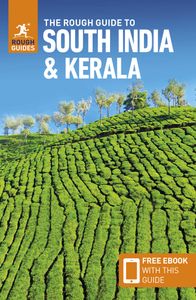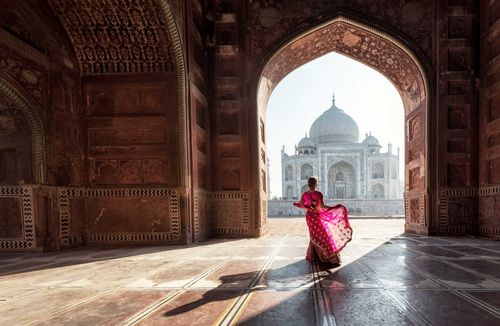What to do in Assam
From exploring the state capital, Guwahati, to trying to spot one-horned rhinos at Kaziranga National Park, here are the best things to do in Assam.
#1 Head to the Kamakhya, Navagraha and Umananda temples of Guwahati
The state capital, Guwahati (or Gauhati), lies on the banks of the mighty Brahmaputra. Although some of the old town still retains its character, Guwahati is a rapidly expanding city of shopping malls. As the main gateway to the region you may well need to stay here briefly.
Guwahati’s main attractions are the Kamakhya, Navagraha and Umananda temples. Northwest of the city are the silk village of Sualkuchi, the pilgrimage site of Hajo and Manas National Park. As the primary hub for the region’s lucrative tea industry, Guwahati’s Assam Tea Auction Centre at Dispur is the largest trade centre in the world for the CTC (crush, tear and curl) tea so characteristic of Assam.
Elsewhere, the bustling markets of Paltan Bazaar, Pan Bazaar and Fancy Bazaar, Guwahati’s main shopping areas, are bunched in the centre on either side of the railway, with the older residential areas north of the tracks spread along the riverside. Assamese silk, wooden rhinos and other crafts are sold at several shops on GNB Road.
#2 Try to spot one-horned rhinos at Kaziranga National Park
Kaziranga National Park is a World Heritage Site covering 430 square kilometres on the southern bank of the Brahmaputra, 217km east of Guwahati. It occupies a vast valley floor against a backdrop of the Karbi Anglong Hills.
The Park's rivulets, shallow lakes and semi-evergreen forested highlands blend into marshes and flood plains covered with tall elephant grass teeming with deer and wild buffalo. However, the big draw, is the park’s famous yet highly endangered one-horned rhinos, best observed from the back of an elephant first thing on a winter’s morning. Jeeps take you deeper into the forest than elephants, but cannot get nearly as close to the rhinos and buffalo
Tiger sightings are relatively rare, despite the park’s official claim to have the highest density of tigers of any park in the world. The abundant birdlife includes also egrets, herons, storks, fish eagles, kingfishers and a grey pelican colony.
#3 Hit up Majuli, one of the largest inhabited river islands in the world
Within striking distance of Jorhat, Majuli is often described as one of the largest inhabited river islands in the world, but erosion in recent years is threatening its claim and, indeed in the long run, its future.
Regardless of its precise status, Majuli is a fascinating place and a true gem of the Northeast, largely because of its unique Vaishnavite satras (Hindu monasteries), though it is also a haven for birdwatchers. There are 22 satras – institutions that contain elements of a temple, monastery, school and centre for the arts – on Majuli: each consists of a prayer hall (namghar), surrounded by living quarters for devotees, and ghats for bathing.
Music, song and dance are essential elements of the devotional life of the satras, and you may be lucky enough to catch one of the performances which are sometimes arranged for large parties of visitors.


_listing_1448379939234.jpeg)
























